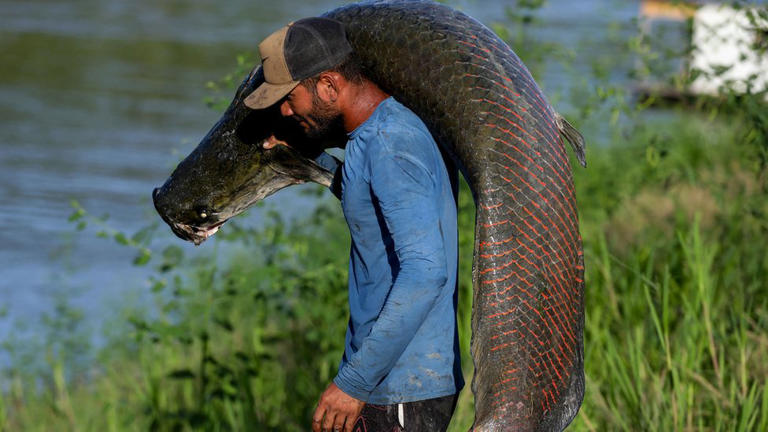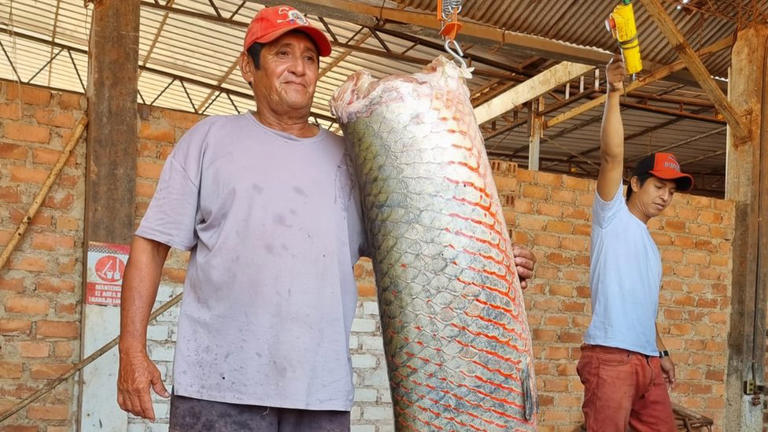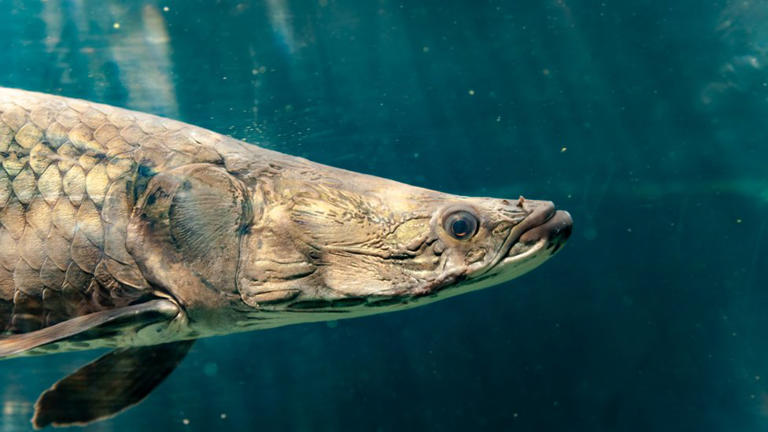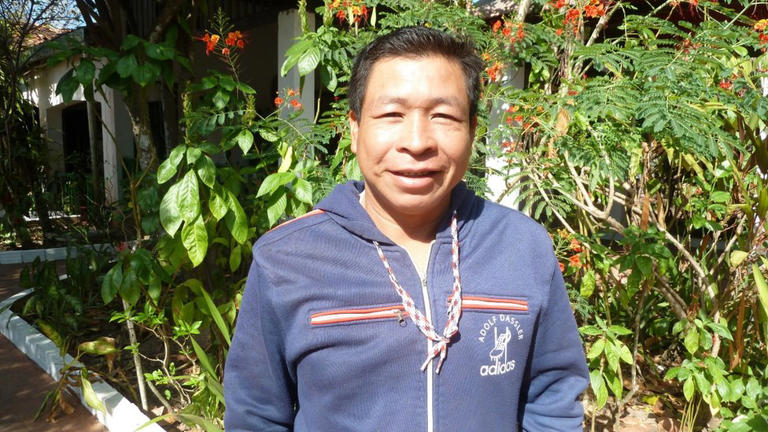
Guillermo Otta Parum has spent over five decades fishing in the Bolivian Amazon. Initially, he focused on catching native fish like various catfish species found in the river. However, his fishing experience took an interesting turn when a colossal freshwater fish, locally known as paiche or Arapaima gigas, made its presence known.

“I initially believed this creature to be a water snake, fearing it might pose a threat and that consuming it could be harmful, possibly even poisonous,” he recollects. In reality, it happens to be one of the largest freshwater fishes globally, reaching lengths of up to 4 meters and weighing 200 kilograms (440 pounds) or more.
Each year, it is approximated that the paiche extends an additional 40 kilometers further into the rivers of the Amazon basin. Federico Moreno, the director of the Center for Aquatic Resources Research at Beni Autonomous University, emphasizes that the paiche’s size and voracious appetite pose a significant threat to the native fish populations.
The paiche exhibits territorial behavior, seizing control of a water body and intimidating native species. This poses a significant challenge as other species flee from the predator, seeking refuge in more distant, remote, and challenging-to-access bodies of water.
The precise year of the paiche’s initial appearance in Bolivia remains unknown. It is commonly thought that the fish’s introduction resulted from the escape of paiche from a fish farm in Peru, its native habitat. Subsequently, these fish dispersed into the rivers of Bolivia.

“In the beginning, when I first introduced the fish to customers, I would offer them small pieces as a complimentary taste, hoping to familiarize them with its flavor.”
To overcome people’s initial reservations about consuming such a large fish, some fishermen went so far as to misidentify the paiche, presenting it as a type of catfish.
Today, paiche has become a widely consumed delicacy throughout Bolivia. Edson Suzano operates a paiche-processing plant in Riberalta, situated in northeastern Bolivia near the Brazilian border.

“We distribute paiche widely, making it available in supermarkets and markets. With various cuts offered, it remains an affordable option. Our monthly processing volume is around 30,000 kilograms,” he states.
For the fishermen, the main challenge lies in locating paiche within the vast expanse of the Amazon. The fish possesses a lung-like organ, requiring it to surface regularly for air. As a result, it tends to thrive in calmer waters, displaying a preference for lakes and lagoons. However, it exhibits migratory behavior when it senses potential threats or danger.

Edson Silvano primarily processed fish that used to be delivered by boat. However, with the increasing demand for paiche, fishermen now venture into even more remote areas to catch the fish. These journeys, lasting up to two weeks, involve transfers from boats to canoes. Unfortunately, this has led to conflicts with indigenous communities.
The indigenous communities hold land titles to many of the distant lagoons where paiche is abundant, and they have initiated their own fishing activities, selling the fish as well. The overlapping interests and activities are creating tensions and disputes between the traditional fishermen and these indigenous communities.

Currently, commercial fishermen are required to obtain special licenses to operate in these areas. However, individuals such as Guillermo Otta Parum express frustration, noting that even with the proper paperwork, they are frequently denied access.
On the other hand, indigenous communities defend their actions, asserting that they are merely safeguarding the resources over which the Bolivian government has acknowledged their right to control. The conflict reflects a complex interplay between regulatory measures, resource management, and the rights of indigenous communities in the region.

Juan Carlos Ortiz Chávez is a member of the Alto Ivon Tco Chacobo indigenous community. According to him, there used to be fear among indigenous people regarding commercial fishermen. However, he notes that the younger generation has embraced change by establishing rules to prevent outsiders from exploiting their resources. “We have made our rules so that people can’t come and take from us anymore,” he explains.
Meanwhile, scientists like Federico Moreno express hope that ongoing fishing activities, regardless of the fishermen’s identity, will help maintain a balance in paiche numbers. The idea is that continuous fishing efforts can contribute to ecological equilibrium among various species.



GIPHY App Key not set. Please check settings